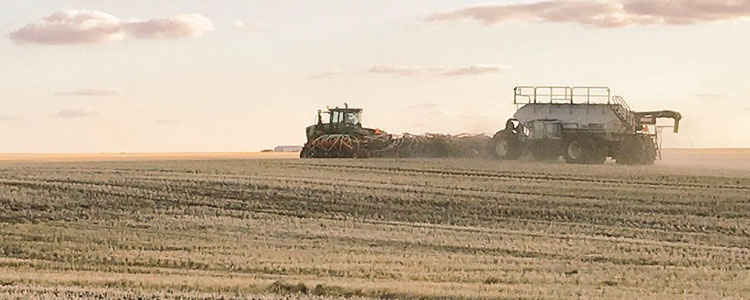
Fertility Management when Placing Fertilizer with Seed
By Kim Stonehouse, MSc, PAg, Crops Extension Specialist, Tisdale and Erica Yaskowich, Ag Dip, ATechAg, Crops Extension Specialist, Kindersley
With the varied amount of moisture across the province in 2022, some producers were able to apply fall banded fertilizer and others were not. Those who were unable to may experience pressure on spring banding and consider stretching the limits of seed placed fertilizer. The latter is not recommended as ammonium toxicity and salt effects can reduce germination and damage seedlings.
Last year’s varied moisture and crop production will also result in variable fertility levels—it will be important to soil test all fields. Once fertility is known, decisions can be made as to how much can be banded, how much to seed place and if there is an option to top dress later in the season.
To determine how much fertilizer can be safely placed with the seed, consider things like seedbed utilization and soil texture. Generally, the higher the seedbed utilization and the greater the clay content, the more seed row fertilizer that can be used. For further information on safe rates of seed placed fertilizer with seed, review the Guidelines for Safe Rates of Fertilizer Applied With The Seed.
Low soil moisture at the time of seeding can increase the risk of fertilizer burn. The recommendation in the guidelines above are based on soils at field capacity. If there are areas that are not at field capacity at the time of seeding the amounts will need to be reduced by at least 50 per cent.
Safe seed placed rates of fertilizer are also dependent on the crop type and seed quality. Cereals withstand more seed placed fertilizer than oil seeds but, regardless of the crop, seeds with poor vigor will suffer more damage from fertilizer than vigorous seed.
Combine all these factors and the safe rates of seed placed fertilizer are below most crop’s growing season requirements. An option for producers to increase seed placed nitrogen may be to use a polymer-coated “slow release” urea fertilizer. This product slows the release of nitrogen into the soil, thus reducing seedling damage. Safe recommended rates of seed placed polymer-coated urea range from 50 to 100 per cent more than those for uncoated urea. However, research has shown that these recommendations may be conservative if care is taken to maintain the integrity of the polymer coating.For more information on fertility management and safe rates of seed placed fertilizer, check out the Nitrogen Fertilization in Crop Production fact sheet, contact the Agriculture Knowledge Centre or your local crops extension specialist.








































